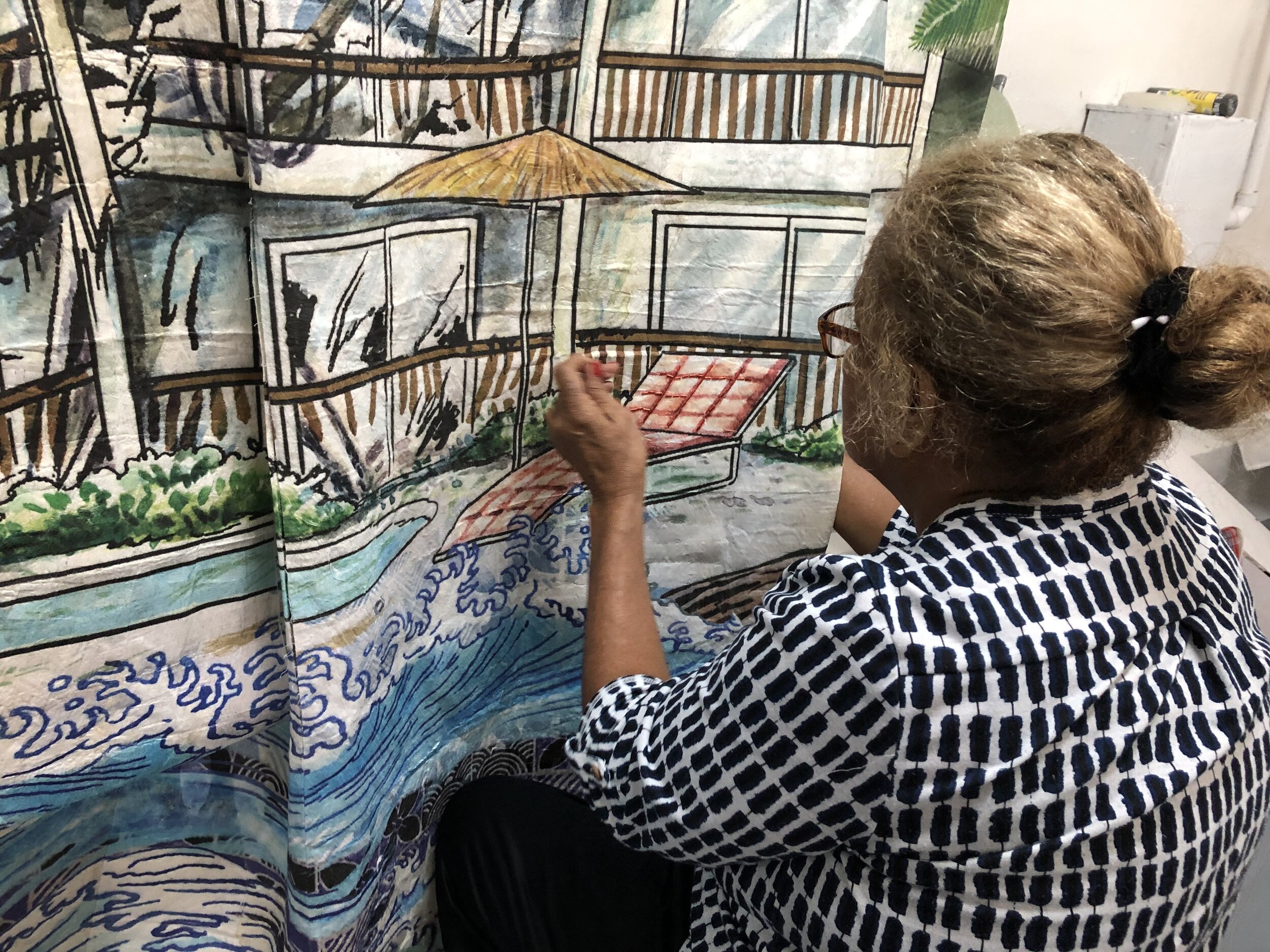
Family members of artist Yuki Kihara beading siapo kimonos at Kiharaʻs art studio located in Upolu Island, Sāmoa
Photo by Yuki Kihara
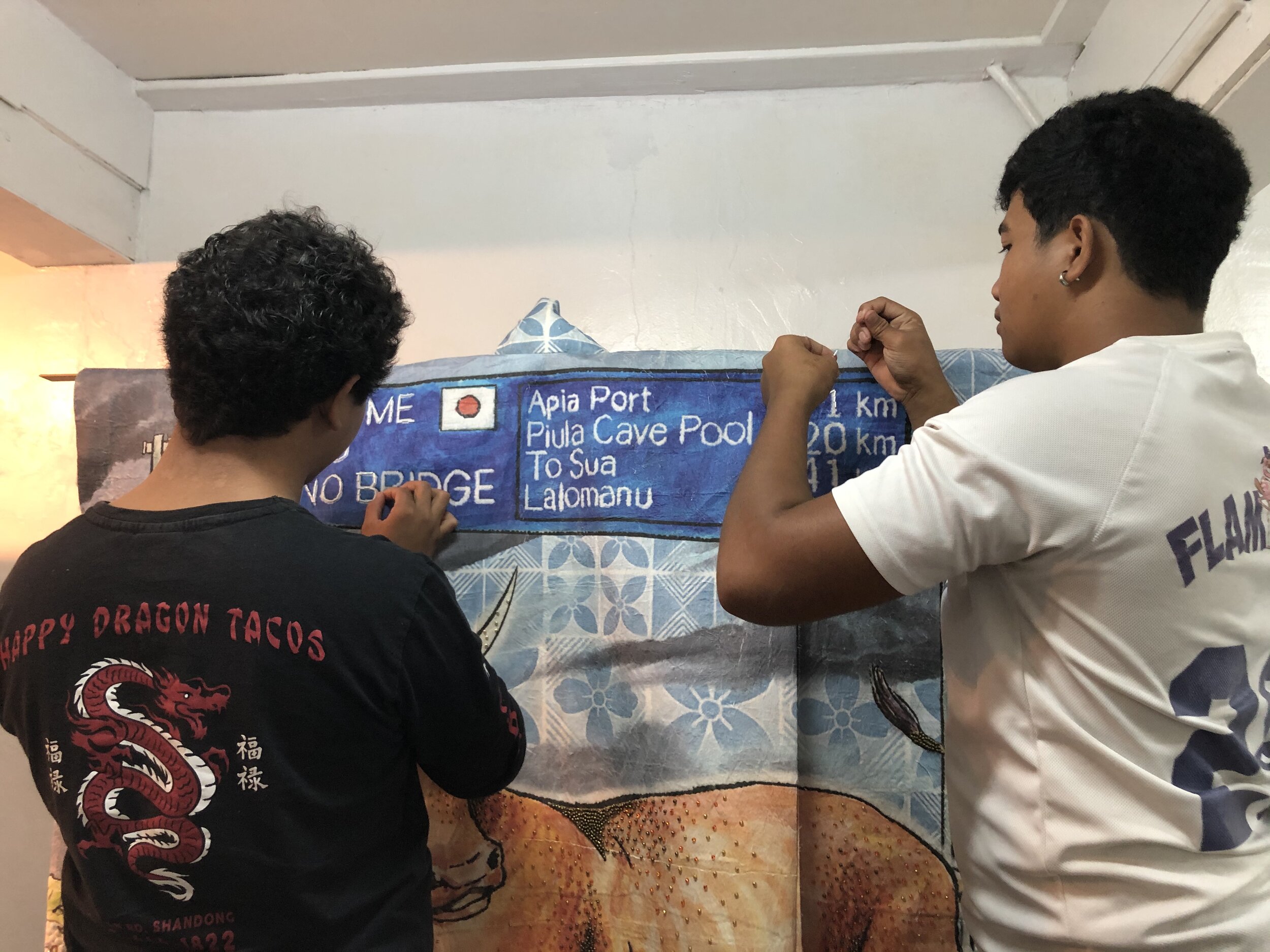
Family members of artist Yuki Kihara beading siapo kimonos at Kiharaʻs art studio located in Upolu Island, Sāmoa.
Photo by Yuki Kihara
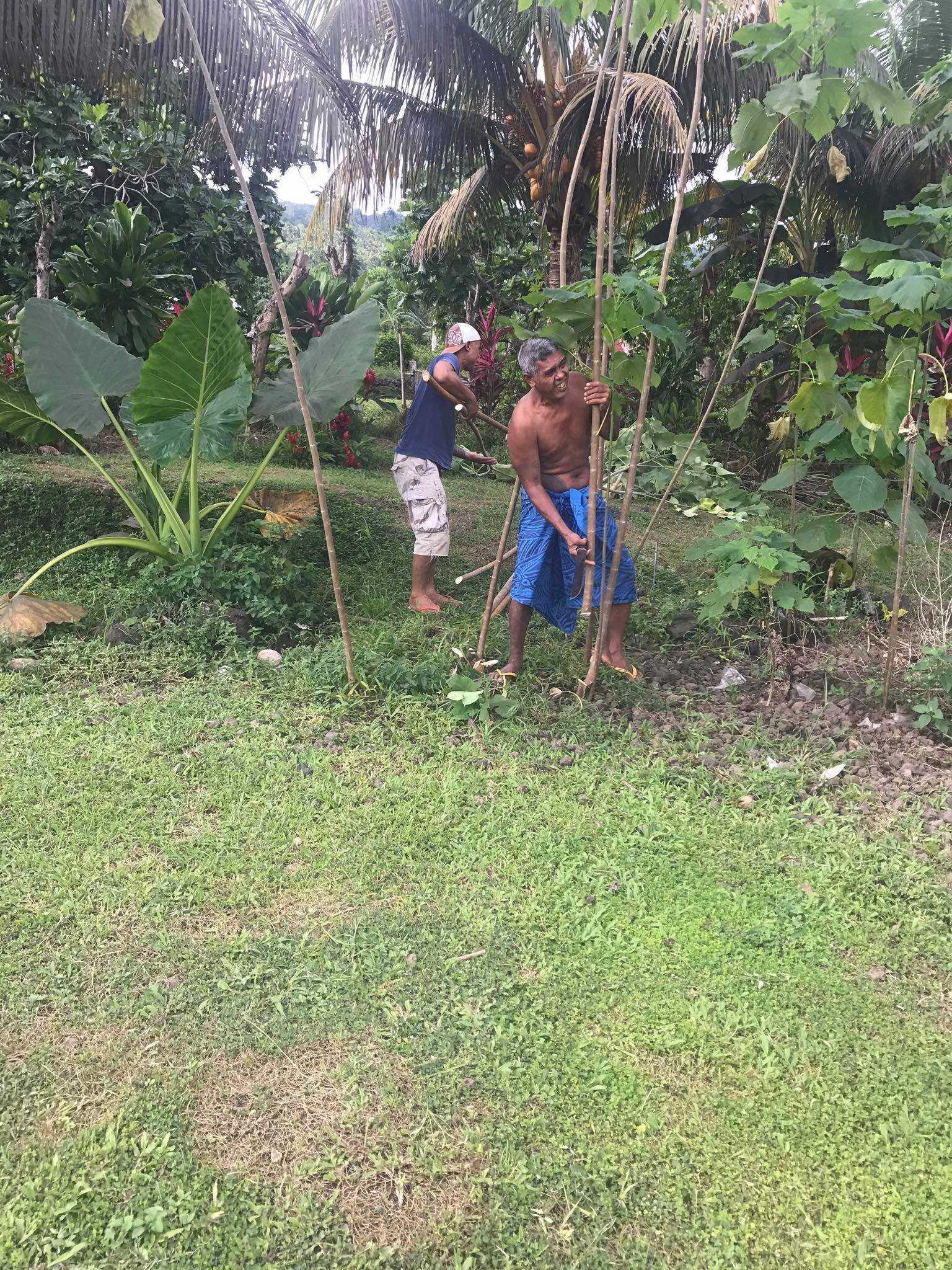
Harvesting the lau uʻa or the paper mulberry plant in Savaiʻi Island, Sāmoa. The inner bark of the lau uʻa is used to produce the uʻa or unpainted barkcloth. Siapo is the name given to the artform of painting the uʻa. Uʻa is also the material used in Kiharaʻs siapo kimonos.
Photo by Ambrosina Hanipale

Harvesting the lau uʻa or the paper mulberry plant in Savaiʻi Island, Sāmoa. The inner bark of the lau uʻa is used to produce the uʻa or unpainted barkcloth. Siapo is the name given to the artform of painting the uʻa. Uʻa is also the material used in Kiharaʻs siapo kimonos.
Photo by Ambrosina Hanipale
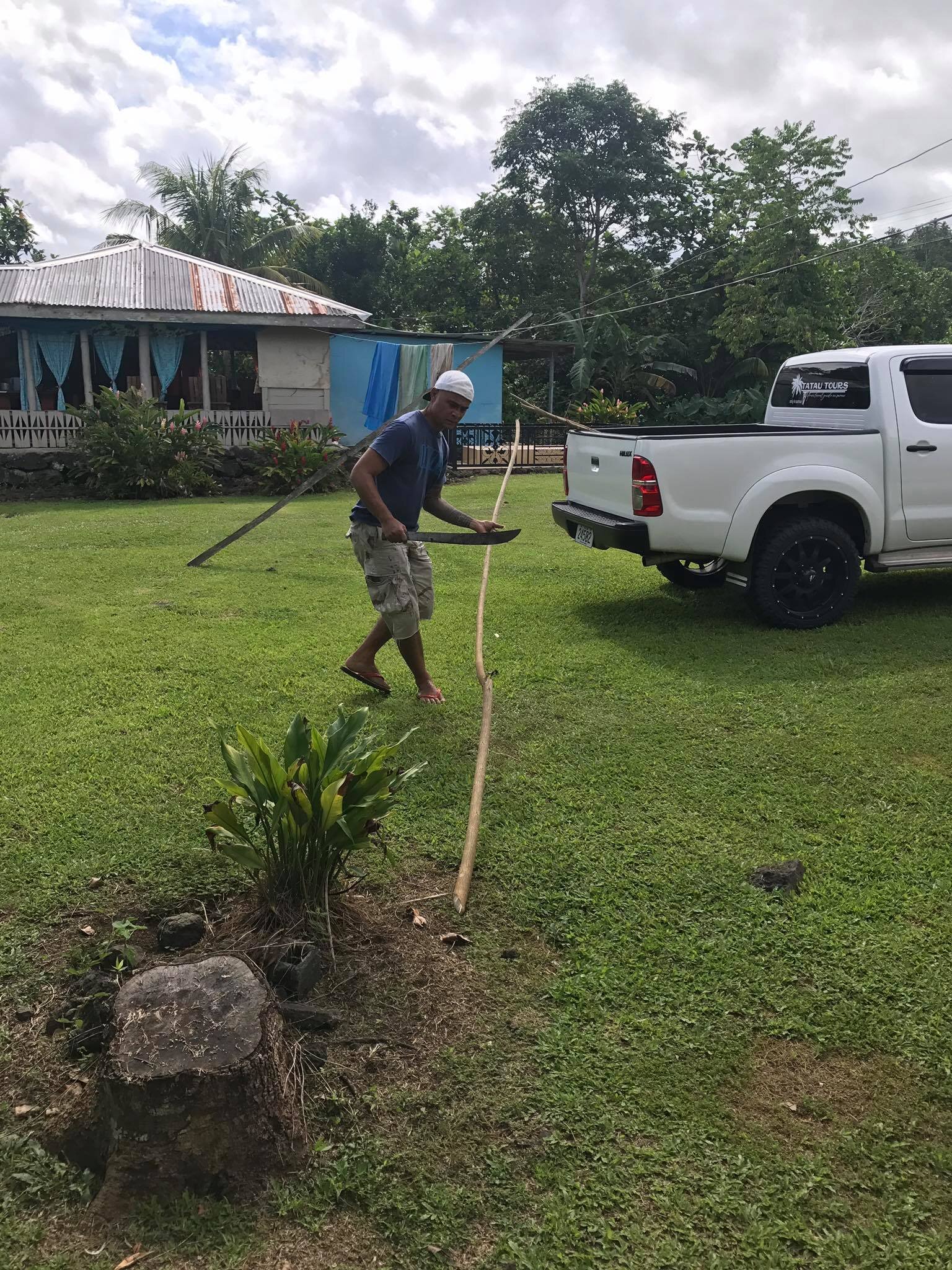
Harvesting the lau uʻa or the paper mulberry plant in Savaiʻi Island, Sāmoa. The inner bark of the lau uʻa is used to produce the uʻa or unpainted barkcloth. Siapo is the name given to the artform of painting the uʻa. Uʻa is also the material used in Kiharaʻs siapo kimonos.
Photo by Ambrosina Hanipale
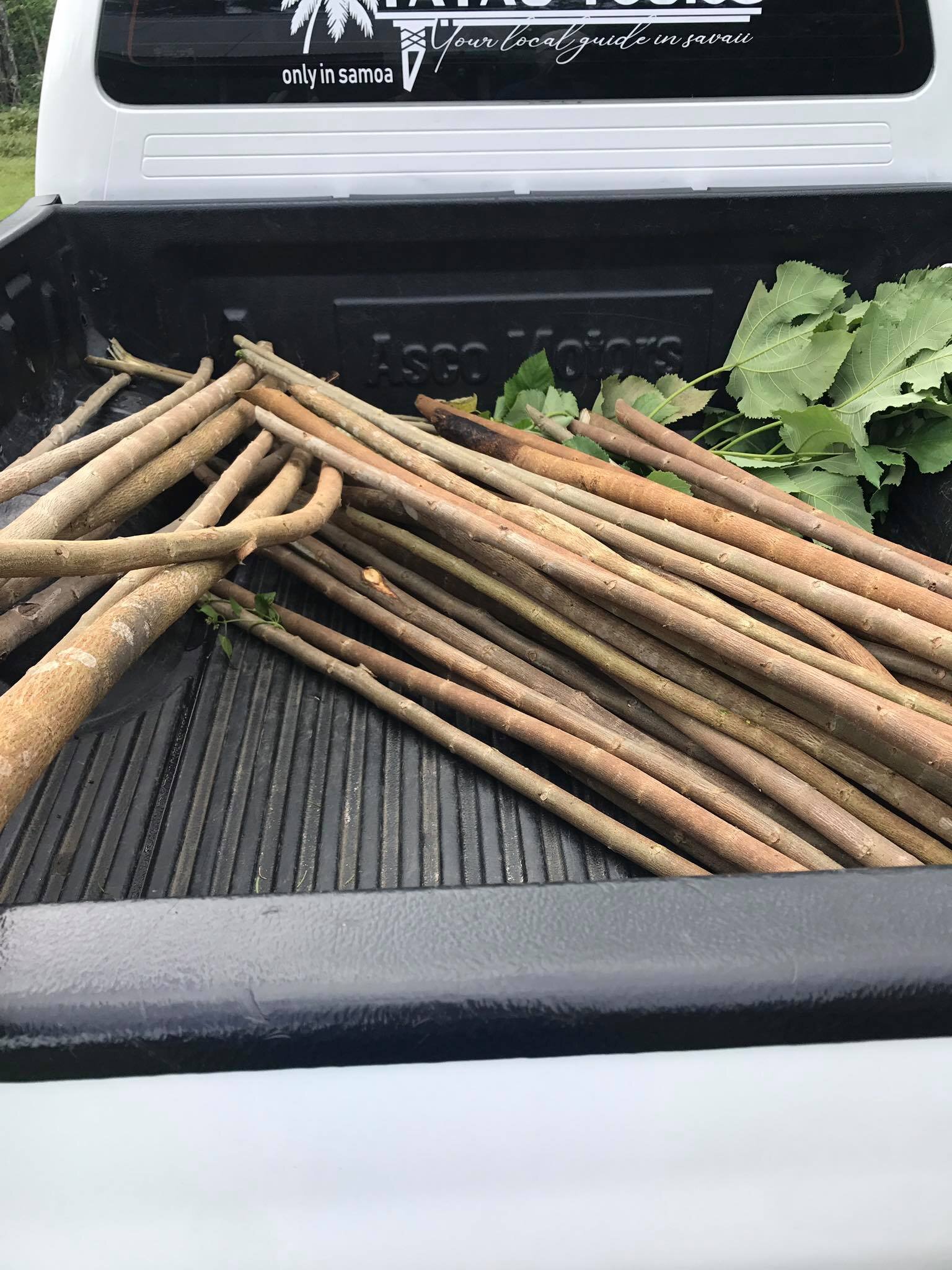
Harvesting the lau uʻa or the paper mulberry plant in Savaiʻi Island, Sāmoa. The inner bark of the lau uʻa is used to produce the uʻa or unpainted barkcloth. Siapo is the name given to the artform of painting the uʻa. Uʻa is also the material used in Kiharaʻs siapo kimonos.
Photo by Ambrosina Hanipale






Family members of artist Yuki Kihara beading siapo kimonos at Kiharaʻs art studio located in Upolu Island, Sāmoa
Photo by Yuki Kihara
Family members of artist Yuki Kihara beading siapo kimonos at Kiharaʻs art studio located in Upolu Island, Sāmoa.
Photo by Yuki Kihara
Harvesting the lau uʻa or the paper mulberry plant in Savaiʻi Island, Sāmoa. The inner bark of the lau uʻa is used to produce the uʻa or unpainted barkcloth. Siapo is the name given to the artform of painting the uʻa. Uʻa is also the material used in Kiharaʻs siapo kimonos.
Photo by Ambrosina Hanipale
Harvesting the lau uʻa or the paper mulberry plant in Savaiʻi Island, Sāmoa. The inner bark of the lau uʻa is used to produce the uʻa or unpainted barkcloth. Siapo is the name given to the artform of painting the uʻa. Uʻa is also the material used in Kiharaʻs siapo kimonos.
Photo by Ambrosina Hanipale
Harvesting the lau uʻa or the paper mulberry plant in Savaiʻi Island, Sāmoa. The inner bark of the lau uʻa is used to produce the uʻa or unpainted barkcloth. Siapo is the name given to the artform of painting the uʻa. Uʻa is also the material used in Kiharaʻs siapo kimonos.
Photo by Ambrosina Hanipale
Harvesting the lau uʻa or the paper mulberry plant in Savaiʻi Island, Sāmoa. The inner bark of the lau uʻa is used to produce the uʻa or unpainted barkcloth. Siapo is the name given to the artform of painting the uʻa. Uʻa is also the material used in Kiharaʻs siapo kimonos.
Photo by Ambrosina Hanipale